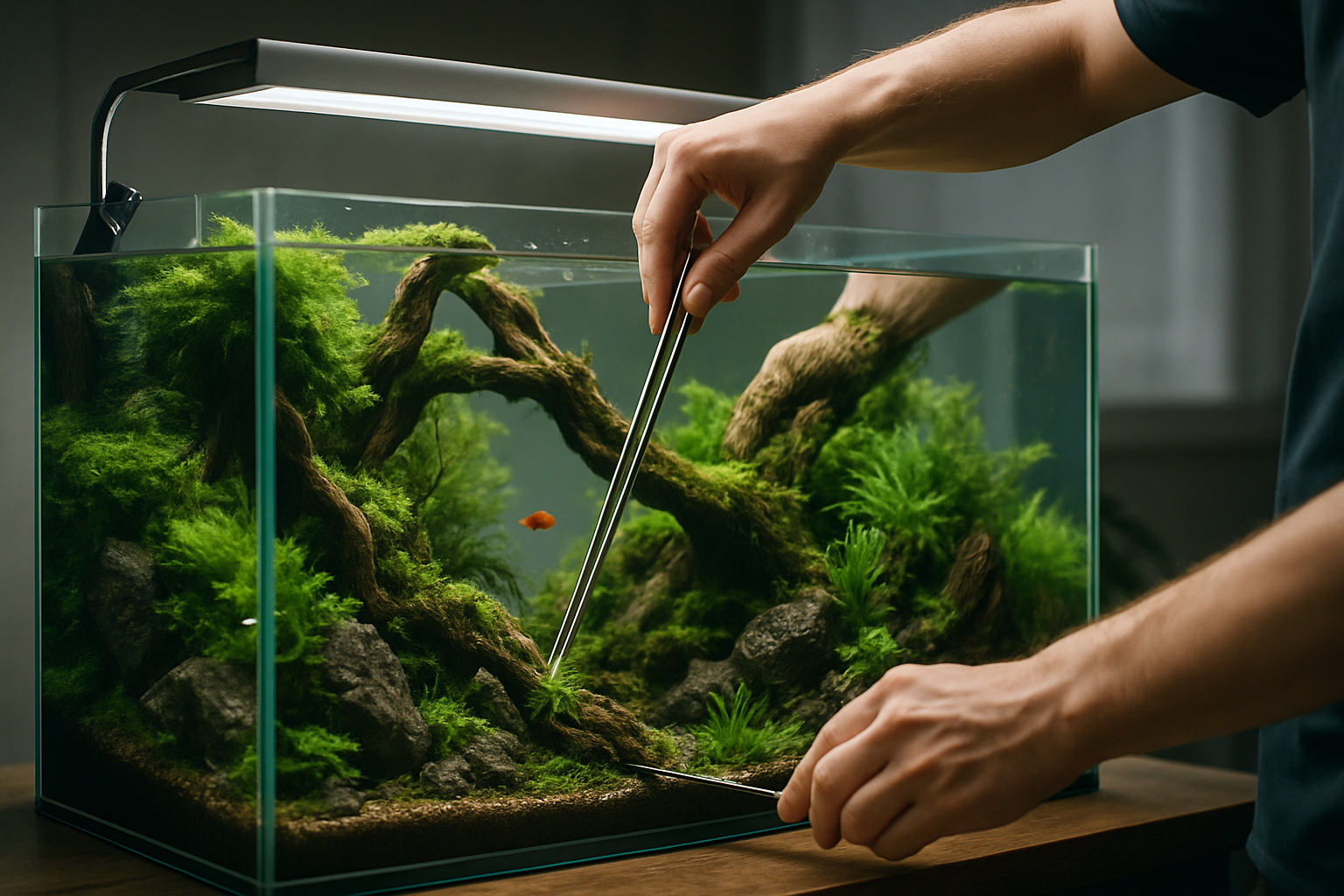Aquascaping: The Art of Underwater Landscapes
Diving into the world of aquatic design, aquascaping has emerged as a captivating blend of art and science. This underwater gardening practice transforms aquariums into living masterpieces, mimicking nature's beauty beneath the surface. From lush forests to rocky canyons, aquascapers craft intricate ecosystems that mesmerize viewers and provide enriching environments for aquatic life. Join us as we explore the fascinating realm of aquascaping, its history, techniques, and the impact it's making in the world of aquarium keeping.

As the art form evolved, different styles emerged, each with its own aesthetic principles. The Dutch style, characterized by orderly rows of colorful plants, gave way to the more naturalistic Nature Aquarium style popularized by Amano. Today, aquascapers draw inspiration from various sources, including terrestrial landscapes, biotopes, and even abstract art.
The Science Behind the Art
While aesthetics play a crucial role in aquascaping, successful designs rely heavily on scientific principles. Aquascapers must consider factors such as water chemistry, lighting, and plant physiology to create thriving ecosystems. Understanding the nitrogen cycle, CO2 supplementation, and nutrient balance is essential for maintaining healthy plant growth and water quality.
Aquascapers also employ hardscape materials like rocks and driftwood to create structure and focal points within their designs. These elements not only enhance the visual appeal but also provide hiding spots and breeding areas for fish and invertebrates. The careful selection and placement of hardscape materials can dramatically influence the overall composition and flow of the aquascape.
Tools of the Trade
Creating and maintaining a stunning aquascape requires a variety of specialized tools and equipment. High-quality lighting systems, often utilizing LED technology, provide the necessary illumination for plant growth and enhance the visual impact of the design. CO2 injection systems supply essential carbon dioxide to promote lush plant growth, while advanced filtration systems maintain water clarity and quality.
Substrate additives and fertilizers ensure that aquatic plants receive the nutrients they need to thrive. Aquascapers also use an array of tools for planting, trimming, and maintaining their underwater gardens, including long tweezers, scissors, and substrate spatulas. The cost of setting up a fully equipped aquascaping system can range from a few hundred dollars for a small setup to several thousand for larger, more elaborate designs.
Aquascaping Competitions and Community
The popularity of aquascaping has led to the emergence of international competitions and a vibrant global community. Events like the International Aquatic Plants Layout Contest (IAPLC) attract thousands of entries from around the world, showcasing the most innovative and breathtaking aquascapes. These competitions not only celebrate the artistry of aquascaping but also drive innovation and push the boundaries of what’s possible in underwater design.
Online forums, social media groups, and local aquarium clubs provide platforms for aquascapers to share their work, exchange ideas, and offer support to newcomers. This sense of community has played a significant role in the growth and evolution of aquascaping as an art form, fostering creativity and encouraging experimentation with new techniques and styles.
The Therapeutic Benefits of Aquascaping
Beyond its aesthetic appeal, aquascaping offers numerous therapeutic benefits for practitioners and viewers alike. The process of creating and maintaining an aquascape can be deeply meditative, providing a sense of calm and connection with nature. Many aquascapers report reduced stress levels and improved mental well-being as a result of their hobby.
Studies have shown that observing aquariums can lower blood pressure, reduce anxiety, and improve mood. The dynamic, ever-changing nature of a well-designed aquascape provides a constantly evolving source of visual interest and relaxation. As a result, aquascapes are increasingly being incorporated into healthcare settings, offices, and public spaces to promote wellness and create soothing environments.
Environmental Impact and Conservation
As the aquascaping hobby grows, so does awareness of its potential environmental impact. Responsible aquascapers are increasingly focused on sustainable practices, such as using ethically sourced materials and choosing plants and fish species that are not endangered or destructive to natural ecosystems. Some aquascapers are even using their skills to recreate and raise awareness about threatened aquatic habitats, helping to educate the public about conservation issues.
The popularity of aquascaping has also led to advancements in aquarium technology and plant cultivation techniques. These innovations have potential applications in fields such as habitat restoration and sustainable agriculture, demonstrating how a hobby can contribute to broader environmental initiatives.
The Future of Aquascaping
As technology continues to evolve, the future of aquascaping looks bright and full of possibilities. Advancements in LED lighting, automated maintenance systems, and even augmented reality are opening up new avenues for creativity and experimentation. Some aquascapers are exploring the integration of technology into their designs, creating interactive displays that respond to viewers or environmental conditions.
The growing interest in biotope aquascapes, which accurately replicate specific natural habitats, is fostering a deeper appreciation for aquatic ecosystems and biodiversity. This trend may lead to increased collaboration between aquascapers and conservation scientists, potentially contributing to efforts to study and preserve threatened aquatic environments.
As aquascaping continues to captivate enthusiasts and push the boundaries of underwater design, it stands as a testament to the enduring human fascination with the natural world. Whether viewed as an art form, a scientific pursuit, or a means of connecting with nature, aquascaping offers a unique and enriching experience for creators and observers alike. As we look to the future, the world of aquascaping promises to continue evolving, inspiring, and transforming our relationship with aquatic environments.





